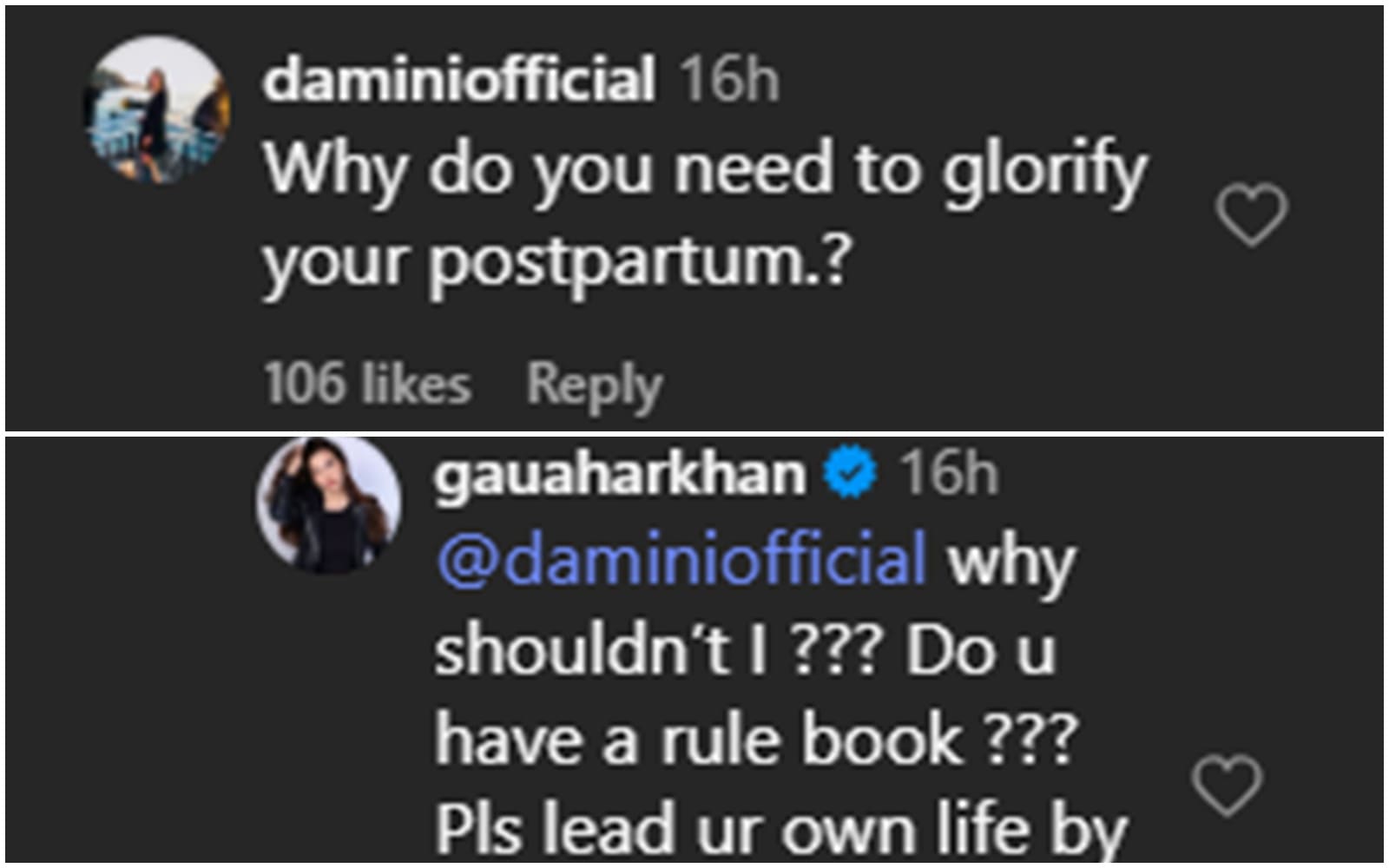📣 For more lifestyle news, click here to join our WhatsApp Channel and also follow us on Instagram
‘Do you have a rulebook?’: Gauahar Khan dances Bhangra a month after giving birth, shuts down troll; expert weighs in on postpartum movement
Dr Shaily Sharma, gynaecologist, says, “Supporting mothers with empathy instead of criticism allows them to heal holistically.
 Gauahar Khan gave birth to her second child a month ago (Source: Instagram/Gauahar Khan)
Gauahar Khan gave birth to her second child a month ago (Source: Instagram/Gauahar Khan)After childbirth, many women are advised to “take it slow,” prioritise rest, recovery, and gradual physical activity. Yet for some new mothers, movement — whether walking, dancing, or light exercise — can be a powerful way to reconnect with themselves.
Actor Gauahar Khan, who welcomed her second son, Farwaan, with Zaid Darbar on September 1, recently shared a video of herself performing Bhangra just a month after delivery. Dressed in a bright yellow suit, she danced to Karan Aujla’s For A Reason, captioning it: “Raat ke 12 baje, No rehearsal, but this song made me do it!!! 1 month postpartum #mombomb.”
 Gauahar Khan gave a fitting reply to an online troll (Source: Instagram/Gauahar Khan)
Gauahar Khan gave a fitting reply to an online troll (Source: Instagram/Gauahar Khan)
While many praised her energy and confidence, some questioned her choice. One user wrote, “Why do you need to glorify your postpartum?” Gauahar’s sharp reply, “Why shouldn’t I??? Do you have a rule book??? Pls lead ur own life by your own rules. I do mine,” resonated with mothers navigating unsolicited opinions on postpartum recovery.
But, how soon can new mothers safely resume physical activities like dancing?
Dr Shaily Sharma, senior consultant gynaecologist at Cloud Nine Hospital, tells indianexpress.com, “Moderate physical activity soon after childbirth can support recovery — improving circulation, hormonal balance, and even reducing fatigue. For most women, gentle movement such as short walks or light stretching is safe within a few days of a normal delivery.”
However, she adds that after a C-section or complicated birth, waiting four to six weeks is generally recommended. Individual health, energy levels, and medical advice should guide the timing. Overexertion, especially with dizziness, headaches, or blurred vision, is a signal to rest. Recovery is deeply personal; the focus should be on gradual strength, not performance.
Social judgement and emotional recovery
Dr Sharma notes that the postpartum phase is as emotional as it is physical. Criticism of a mother’s choices — whether resting, exercising, or sharing her journey — adds unnecessary stress.
“This strain can affect sleep, trigger tension headaches, or cause fatigue. Pressure to ‘bounce back’ quickly can distort body image and self-confidence. Supporting mothers with empathy helps them heal holistically and reconnect with their sense of identity,” she says.
Safe ways for new mothers to rebuild strength and energy in the first few weeks after delivery
During the first few weeks, Dr Sharma stresses that rest remains the most powerful tool for healing. Light breathing exercises, pelvic-floor strengthening, and slow walks help increase circulation and energy without strain.
View this post on Instagram
“Nutritious meals rich in iron, protein, and vitamin A support both strength and eye health. Staying hydrated and limiting screen time can prevent eye dryness and fatigue. Gradual yoga or stretching, after medical clearance, helps rebuild flexibility and emotional balance. The key rule is simple: listen to your body. Pain or exhaustion is a sign to rest, not push harder,” says Dr Sharma.
DISCLAIMER: This article is based on information from the public domain and/or the experts we spoke to. Always consult your health practitioner before starting any routine.
📣 For more lifestyle news, click here to join our WhatsApp Channel and also follow us on Instagram
- 01
- 02
- 03
- 04
- 05



























